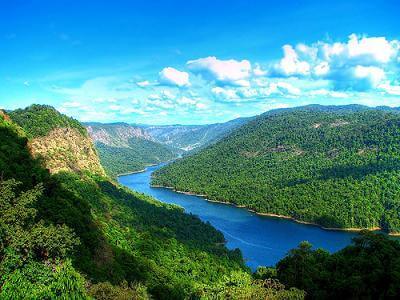WORLD NETWORK OF BIOSPHERE RESERVE (WNBR)
1. Introduction:
- November 3, 2022, will be the first "The International Day for Biosphere Reserves".
- The World Network of Biosphere Reserves was formed in 1971, as a backbone for biodiversity conservation, ecosystem conservation, and living in harmony with nature.
- There are 738 properties in 134 countries, including 12 in India, 4 in Srilanka, and 3 in Maldives.
- An expert mission was planned for spring 2023 to Bhutan, India's northeast & the Sundarbans in Bangladesh.
- Bangladesh, Bhutan, and Nepal do not have biospheres yet.
2. Ideal Platform:
- WNBR, an amazing network of sites of excellence is a unique tool for cooperation through sharing knowledge, exchanging experiences, building capacity & promoting best practices.
- Help extended through the network is of great importance because the ecological carrying capacity of the planet earth was exceeded.
- To breathe clean air, have access to enough good water, eat nutritious & affordable food, and live in the dignity-human race has to live in harmony with nature.
- Living in Harmony with Nature that exists in the United Nations System is the WNBR, making these places more important today than ever before, where humans are thriving & relearning to live with nature.
| Our planet was set up so uniquely in the Solar System so that ecosystems can function & provide a home for all living organisms. It is our responsibility to respect nature. |

3. South Asia:
- 30 biosphere reserves were established in South Asia.
- The first one was the Hurulu Biosphere Reserve, Sri Lanka with 25,500 hectares of tropical dry evergreen forest.
- The first biosphere reserve in India was designated by UNESCO in 2000, namely the blue mountains of the Nilgiris in Tamil Nadu, Kerala, and Karnataka.
- Considering the massive long-term threats to human survivability like biodiversity loss, climate change, pollution & population dynamics, accelerated by the bling belief in technological solutions for all problems, many biosphere reserves are needed globally.
- India is an emerging superpower of unlimited opportunities which has become an important global player on environmental sustainability issues.
- Spain has a landmass of 506,000 sq. km, a population of 47.4 million and is one of the leading participating WNBR countries with 53 properties.
- South Asia has a very diverse set of ecosystems with Bhutan, India, and Nepal combined having many glaciers, surrounded by lakes, and alpine ecosystems.
- Biosphere reserves have all developed science-based management plans where local solutions for sustainable human living & nature conservation are being tested.
- Issues of concern include biodiversity, clean energy, climate, environmental education, and water & waste management, supported by scientific research & monitoring.
- Biosphere reserves are internationally recognised sites on land, at the coast or in oceans.
- Governments alone decide which areas to nominate.
- Before approval by UNESCO, the sites are externally examined.
- If approved, they will be managed based on a plan, reinforced by credibility checks while remaining under the sovereignty of their national government.
4. Perspective:
- Some countries in South Asia do not have enough biosphere reserves.
- More financial support from the richer nations & the private sector would be desirable to advance biosphere reserves in these countries.
- Bangladesh, Bhutan, and Nepal are on the priority list.
- The existence of the new World Network of Mountain Biosphere Reserves provides a welcome opportunity for Bhutan & Nepal to establish their first biosphere reserves & participate in the world network.
5. Epilogue:
With at least one biosphere reserve per country developed in Bhutan, Bangladesh, and Nepal until 2025; with additional biosphere reserves in India's North-east & along the coasts, it will give realisation to millions of people that a better future is truly possible-one where humans truly live in harmony with nature.
Source: The Hindu




